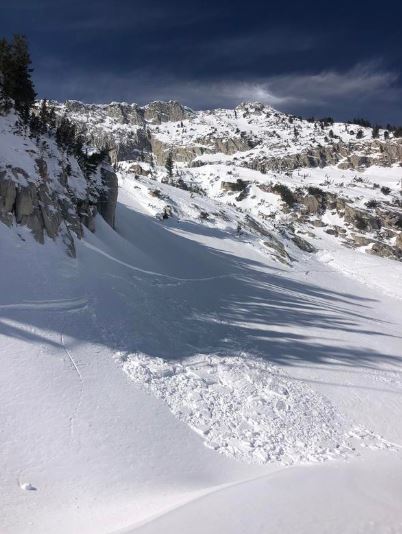Discounted lift tickets - Thanks to the generous support of our Utah ski resorts and Ski Utah, all proceeds from these ticket sales go towards paying for avalanche forecasting and education! Get your tickets
here.
The UAC's Avy Awareness Auction is currently underway with tons of great gear, jewelry, artwork and experiences available. Visit the auction page
HERE to help support the UAC's spring avalanche awareness and outreach efforts.
A new version of the UAC IOS application is now available on the Apple App Store. This version fixes many of the issues that occur when running IOS 13.
Download it now!
This morning, temperatures range through the 20's F, with a temperature inversion at some low-elevation trailheads with temperatures in the mid-teens. Winds are westerly, southwesterly and generally light averaging 5-15 mph below 10,000'. At the highest elevation ridgetops gusts are in the low 30s mph.
Today, the high pressure system will gradually shift east. This will bring mostly cloudy skies and warm temperatures, in the upper 30s to low 40s F. Winds will continue to be west southwesterly and average 5-15 mph with gusts below 25 mph at mid-elevations. Upper elevation ridgelines will average 10-20 mph with gusts up to 30 mph.
Looking forward, a storm system will be tracking south of us tonight and could bring up to an inch of snow to the Central Wasatch.
Two avalanches were reported in the backcountry yesterday.
The first was a skier triggered soft slab avalanche on a Northeast aspect at 10400 feet on the Coalpit Headwall. This soft slab broke 35 feet wide and ran about 600 feet. One person was caught, but no one was buried. You can find a great first-person account
HERE.
The second was a serious of intentional skier triggered wind slabs on an East aspect at 9400 feet in Hogum. These avalanches were 18 inches deep and failed on the Feburary 7th crust, and broke 30 feet wide. You can find the full report
HERE.
Our
Week in Review - which summarizes weather and avalanche activity over the past week - has been published
HERE.










